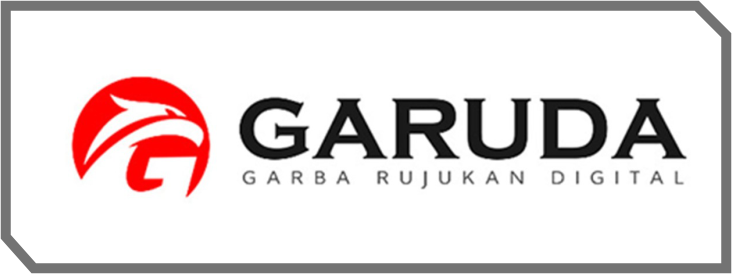Semantic Analysis of Trademark Names Using Large Language Models
Keywords:
LLM, Trademark, Semantic, Intellectual Property, NLPAbstract
This study introduces a novel framework for trademark similarity analysis that integrates large language models (LLMs) to assess lexical, phonetic, and semantic relationships between trademark names without reliance on large precompiled databases or retraining. The primary motivation is to address the growing need for efficient and transparent preliminary trademark screening, which is often constrained by the limitations of traditional rule-based or string-matching approaches. To achieve this, a web-based system was developed using the Gemini API, allowing users to input trademark pairs for automated analysis. The workflow includes text normalization, phonetic conversion, multi-dimensional similarity computation, and the generation of interpretative explanations for each pair. A test dataset of ten diverse trademark name pairs was designed to capture variations in lexical overlap, phonetic similarity, and semantic association. The system’s outputs were evaluated both in terms of processing efficiency and expert assessment. Quantitative results show that the system can process a pair in under a second on average, handling 3,229 tokens across ten pairs with minimal computational overhead. Qualitative evaluation by five trademark and intellectual property experts using a 5-point Likert scale yielded mean scores of 4.4 for relevance, 3.8 for explanation quality, and 4.2 for practical usefulness, confirming strong alignment between the LLM outputs and expert intuition. The novelty of this research lies in demonstrating that LLMs can provide not only accurate similarity assessments but also human-readable interpretative reasoning, bridging the gap between automation and expert judgment in trademark evaluation. This approach offers a transparent and scalable solution for early-stage brand screening, significantly reducing the reliance on extensive databases and manual effort. The findings indicate a clear potential for integration into industrial-scale trademark examination workflows, paving the way for future developments in batch processing, recommendation systems, and enhanced interpretability in AI-assisted intellectual property management.
References
[1] S. Fishman, Trademark: Legal Care for Your Business & Product Name. Berkeley, CA, USA: Nolo, 2022.
[2] D. Crass and F. Schwiebacher, "The importance of trademark protection for product differentiation and innovation," Economia e Politica Industriale, vol. 44, no. 2, pp. 199–220, 2017.
[3] R. Setchi and F. M. Anuar, "Multi-faceted assessment of trademark similarity," Expert Systems with Applications, vol. 65, pp. 16–27, 2016.
[4] World Intellectual Property Organization (WIPO), World Intellectual Property Indicators 2024. Geneva, Switzerland: WIPO, 2024. doi: 10.34667/tind.50133.
[5] Suyahman, Branding UMKM: Perencanaan, Perlindungan, dan Evaluasi Branding di Era Digital. Klaten, Indonesia: PT Solusi Administrasi Hukum, 2025.
[6] G. Showkatramani, N. Khatri, A. Landicho and D. Layog, "Deep Learning Approach to Trademark International Class Identification," 2019 18th IEEE International Conference On Machine Learning And Applications (ICMLA), Boca Raton, FL, USA, 2019, pp. 608-612, doi: 10.1109/ICMLA.2019.00112.
[7] C. V. Trappey, A. J. Trappey, and B. H. Liu, “Identify trademark legal case precedents—Using machine learning to enable semantic analysis of judgments,” World Patent Information, vol. 62, p. 101980, 2020.
[8] C. V. Trappey, A. J. Trappey, and S. C.-C. Lin, “Intelligent trademark similarity analysis of image, spelling, and phonetic features using machine learning methodologies,” Advanced Engineering Informatics, vol. 45, p. 101120, 2020.
[9] S. Adarsh, E. Ash, S. Bechtold, B. Beebe, and J. Fromer, “Automating Abercrombie: Machine‐learning trademark distinctiveness,” Journal of Empirical Legal Studies, vol. 21, no. 4, pp. 826–860, 2024.
[10] R. Zhang and X. Wang, “Commodity classification in livestreaming marketing based on a conv-transformer network,” Multimedia Tools and Applications, vol. 83, no. 18, pp. 54909–54924, 2024.
[11] Heiler, S. (1995). Semantic interoperability. ACM Computing Surveys (CSUR), 27(2), 271-273.
[12] S. Webb and P. Nation, How Vocabulary Is Learned. Oxford, U.K.: Oxford Univ. Press, 2017.
[13] J. Pierrehumbert, "Phonological and phonetic representation," Journal of Phonetics, vol. 18, no. 3, pp. 375–394, 1990.
[14] P. Sanderson, "Linguistic analysis of competing trademarks," Language Matters, vol. 38, no. 1, pp. 132–149, 2007.
[15] Zhang, H., Gan, W., & Jiang, B. (2014, September). Machine learning and lexicon based methods for sentiment classification: A survey. In 2014 11th web information system and application conference (pp. 262-265). IEEE.
[16] Verma, M. (2017). Lexical analysis of religious texts using text mining and machine learning tools. International Journal of Computer Applications, 168(8), 39-45.
[17] Y. Sharma and J. Patil, "Understanding the concept of phonetic and visual similarity vis-a-vis to letter trademarks through judicial precedents," DME Journal of Law, vol. 4, no. 2, pp. 40–47, 2023.
[18] N. Raykar, P. Kumbharkar, and S. Rangdale, "Phonetic redundancy avoidance technique," in Proc. Int. Conf. Smart Systems: Innovations in Computing, Singapore: Springer Nature Singapore, Oct. 2023, pp. 109–118.
[19] M. Wu, J. Xu, X. Chen, and H. Meng, "Integrating potential pronunciations for enhanced mispronunciation detection and diagnosis ability in LLMs," in Proc. ICASSP 2025 IEEE Int. Conf. Acoustics, Speech and Signal Processing (ICASSP), Apr. 2025, pp. 1–5. IEEE.
[20] S. Kumar and K. K. Bhatia, "Semantic similarity and text summarization based novelty detection," SN Applied Sciences, vol. 2, no. 3, p. 332, 2020.
[21] E. Shin, Y. Yu, R. R. Bies, and M. Ramanathan, "Evaluation of ChatGPT and Gemini large language models for pharmacometrics with NONMEM," Journal of Pharmacokinetics and Pharmacodynamics, vol. 51, no. 3, pp. 187–197, 2024.
[22] Google, "AI Studio," [Online]. Available: https://aistudio.google.com/. [Accessed: Aug. 2, 2025].
[23] P. Kumar and M. Sharma, "Data, machine learning, and human domain experts: none is better than their collaboration," International Journal of Human–Computer Interaction, vol. 38, no. 14, pp. 1307–1320, 2022.
[24] A. Joshi, S. Kale, S. Chandel, and D. K. Pal, "Likert scale: explored and explained," British Journal of Applied Science & Technology, vol. 7, no. 4, p. 396, 2015.
[25] H. Kirk, Prediction versus Management Models Relevant to Risk Assessment: The Importance of Legal Decision-Making Context, in Clinical Forensic Psychology and Law, pp. 347–359, 2019.
[26] D. G. Gordon and T. D. Breaux, "The role of legal expertise in interpretation of legal requirements and definitions," in Proc. 2014 IEEE 22nd Int. Requirements Engineering Conf. (RE), 2014, pp. 273–282.
Downloads
Published
How to Cite
Issue
Section
License
Copyright (c) 2025 Journal of Artificial Intelligence and Legal Technology

This work is licensed under a Creative Commons Attribution-ShareAlike 4.0 International License.









